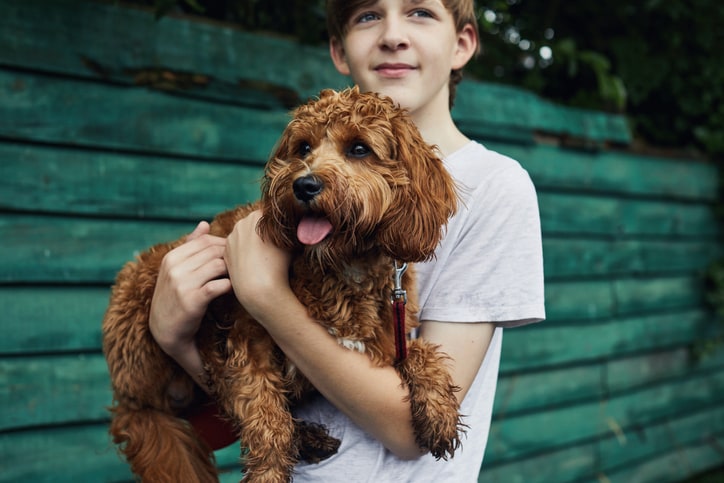After noticing your dog spending a lot more time a lot of extra scratching and nipping at their legs, you’ve come to realisation: “My dog has fleas”. Unfortunately, even if you’ve taken all the advised precautions, the likelihood is that your dog will catch fleas at some point.
Your dog is more exposed to fleas than you may think: fleas live in long patches of grass in gardens and forests, meaning that they could easily catch them during walk time. Fleas thrive in hot, humid conditions, so they are most active during the spring and summer months. Unfortunately though, these pests are hardy — and tricky. During the winter, they can live indoors on warm hosts.
How Can You Tell If Your Dog Has Fleas?
Restlessness, scratching, licking or biting themselves could all be indicators that your dog has fleas. If you’re not sure, give your dog a bath: fleas don’t like to be submerged in water, so, just like in cartoons, you’ll see the tiny black pests jumping for their lives.
You can investigate further by combing through your pet’s fur with your fingers to expose the skin and look for fleas or flea excrement. Fleas are black and leave trails of black specks in their path.
What Should You Do If You or Your Children Have Flea Bites?
If you or your family starts to notice little clusters of tiny, itchy bites, your dog’s fleas could be the cause. The size and location of these bites can vary, but mainly look out for concentrated pockets of bug bites on the ankles.
Fortunately, people rarely get infections from flea bites and, unlike ticks and mosquitoes, fleas are not known to carry diseases. If you or your children get flea bites, you should treat them in the same way you would treat mosquito bites: apply cool compresses and hydrocortisone cream. In cases of extreme itching, you can also use an over-the-counter pain reliever, such as acetaminophen.
My Dog Has Fleas…Now What?
There are various steps that you should take to get rid of your dog’s fleas. Start by bathing your dog with a natural pesticide-based shampoo. In order for this shampoo to be effective, you must leave it on your dog for at least five minutes before rinsing it off. Then, you should comb through your dog’s fur while it’s still wet to make sure all the fleas are gone. During this process, be sure to check the places fleas can hide, such as around the ears, tail and feet.
Thorough flea removal doesn’t just stop at when your dog is flea-free: the rest of their living space needs to be treated too, to prevent re-infestation. Fleas nest and breed in bedding, furniture and carpeting, meaning that anything in your house that’s cushioned and out of sight needs to be treated with a flea-killing product. Remember to treat their toys, their bed and also in your car and garden.
A wide range of flea-killing products are available, including a variety of inexpensive, all-natural options. Make sure that you read all the labels before buying a product; after all, you’re putting it where, you, your children, and your pets sleep!
After you have gone through this process, you should vacuum all the carpeted areas of your house. In an effort to avoid re-infestation, keep a flea collar in your vacuum bag. If you’re unwilling or unable to perform these flea removal tasks, you should call a professional dog groomer or pest control service.
How Can You Prevent Your Dog From Getting Fleas?
In order to prevent your dog from getting fleas, never skip their monthly tick and flea treatments or flea collar replacement. You should be especially vigilant if your pet likes to go on long walks or spends time at dog parks, day care or boarding facilities with other dogs.
When you take your dog for a walk, try not to let them sniff around small bushes and long grasses, as this is where dogs tend to pick up fleas and ticks. Quickly recheck your pets after each outing to be sure that they haven’t brought in new fleas.
If you have treated your dog for fleas but they still get bitten, you should consider switching to another product. For a natural deterrent, you can even try fighting bugs with bugs. For instance, ladybirds eat fleas, so you might want to think about buying some and sprinkling them around your plants.

